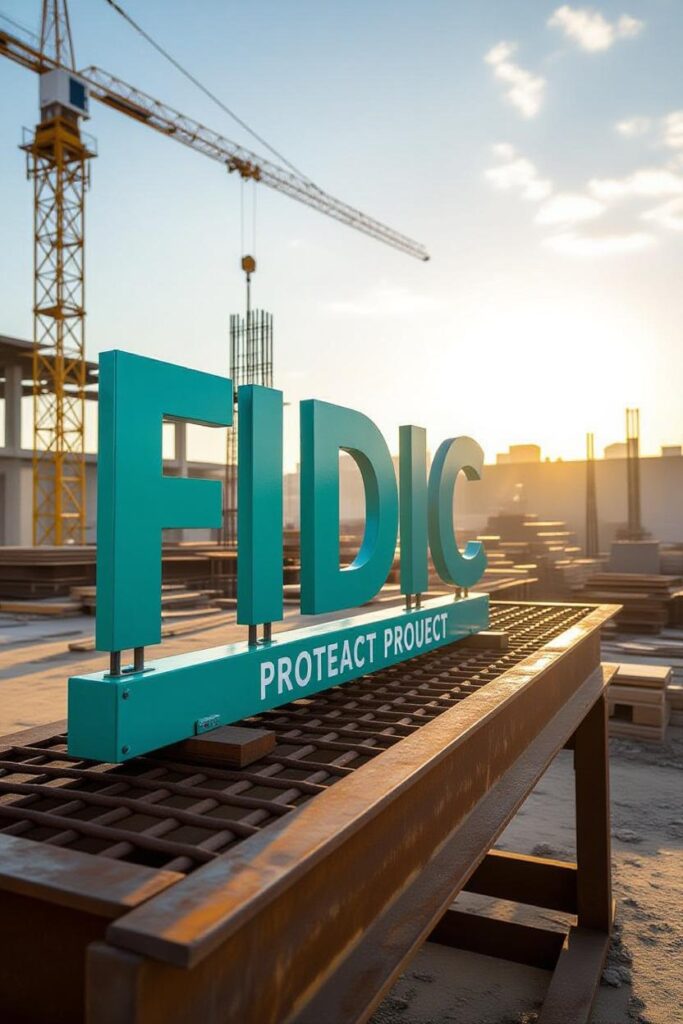FIDIC Contract Variations: Practical Issues and Resolution Techniques
FIDIC contract variations are fundamental mechanisms in international construction contracts, enabling adaptations to project scopes under Clause 13 of the FIDIC Red Book or Yellow Book, which cover additions, omissions, or substitutions before the Taking-Over Certificate. These changes often arise in complex EPC projects, where unforeseen site conditions or evolving employer requirements demand timely adjustments to avoid escalation into major construction claims. Proactive management of such variations not only ensures compliance with global standards but also minimizes financial risks, making it a critical skill for contractors, engineers, and legal advisors in the Middle East and beyond.Overview of FIDIC Contract VariationsIn FIDIC contracts, a variation is defined as any alteration to the original works, initiated by the engineer or proposed by the contractor, to reflect real-world project dynamics like design changes or material substitutions. Clause 13 empowers the engineer to issue instructions for these changes, but they must be executed reasonably, with the contractor entitled to extensions of time or cost reimbursements if impacts are proven. For instance, in large-scale infrastructure projects, variations emerge when changes exceed 10-15% of the contract sum, triggering rate adjustments to prevent unfair burdens on either party. This framework promotes efficiency, as seen in FIDIC’s emphasis on value engineering under Sub-Clause 13.2, where contractors share savings from innovative proposals, aligning interests in dispute resolution. Understanding these elements is vital for professionals handling contract variations in diverse jurisdictions, including Egypt’s giga projects and GCC tenders.7 Common Practical Issues in FIDIC Contract VariationsOne of the most prevalent issues in FIDIC contract variations is the lack of timely engineer approvals, leading to contractors proceeding on verbal instructions only to face disputes over authorization and payment in construction claims. Valuation discrepancies further complicate matters; for example, applying Bill of Quantities rates to entirely new work often results in undervaluation, sparking protracted negotiations and potential arbitration under ICC rules. Scope creep from repeated employer-driven changes can also overload resources, delaying milestones and inflating costs, particularly when variations alter the project’s core nature without invoking the contractor’s right to object under Clause 13.1. In the Middle East, regulatory hurdles add layers, as these issues intersect with local procurement laws, requiring bilingual documentation to avoid misinterpretations in dispute resolution processes. Additional challenges include inadequate site investigations, design errors by the employer, and unforeseen physical conditions under Clause 4.12, which collectively account for over 60% of variation-related claims in international projects. Poor communication between stakeholders exacerbates these problems, while currency fluctuations in multi-jurisdictional contracts can amplify cost impacts. These challenges underscore the need for robust record-keeping to substantiate any variation claims, ensuring equitable outcomes.Handling FIDIC Contract Variations under Clause 13Clause 13.1 grants the engineer broad authority for FIDIC contract variations, encompassing changes in quantities, quality, standards, sequence, or even the elimination of work items, provided they do not fundamentally alter the contract’s character. Upon receiving a variation instruction, contractors must promptly notify any impossibilities and submit a detailed proposal on methods, resources, and timelines, typically within 28 days, to facilitate accurate impact assessments. Valuation follows Clause 12 principles: using contract rates for similar work, derived rates for minor changes, or fair market pricing for dissimilar items, often verified through daywork records to prevent inflated construction claims. Value engineering, as outlined in Sub-Clause 13.2, allows contractors to proactively propose solutions for variations, such as material alternatives that reduce costs by 20% or more, with benefits shared proportionally between parties. In practice, effective handling of these changes hinges on this collaborative valuation, reducing the likelihood of escalation to formal dispute resolution mechanisms like DAB referrals. For EPC contexts, integrating BIM software early can simulate contract variations, aiding precise quantification and minimizing practical issues.Resolution Techniques for FIDIC Contract VariationsResolving FIDIC contract variations begins with immediate documentation: contractors should demand written orders and log all related activities to build a strong case for time and cost extensions in construction claims. The engineer’s determination under Sub-Clause 3.7 serves as the first tier of variation resolution, where parties negotiate valuations based on evidence, aiming for consensus to avert DAB involvement. For contentious cases, amicable settlement via mediation is preferable, as it preserves relationships while addressing issues like payment delays, often resolving 70% of disputes pre-arbitration. If needed, escalation to the Dispute Adjudication Board (DAB) under Clause 20 provides binding yet reviewable decisions, ensuring swift handling without halting project progress. Advanced techniques include using AI-driven contract analytics to flag potential variations early, streamlining dispute resolution and enhancing compliance in international projects. Legal experts recommend incorporating escalation clauses tailored to local laws, bolstering overall efficacy in variation resolution.Best Practices to Avoid Disputes in FIDIC Contract VariationsTo mitigate risks in FIDIC contract variations, adopt standardized templates for variation requests, capturing details like scope impacts and preliminary pricing to ensure transparency from the outset. Digital tools, such as Procore or Autodesk BIM 360, excel in tracking changes, automating approvals and integrating with Clause 13 workflows for real-time visibility into construction claims. Regular training workshops for project teams on FIDIC protocols foster a culture of proactive dispute resolution, emphasizing contemporaneous records to validate any variation efforts. In multinational settings, conduct jurisdictional audits to align variations with regional regulations, like Egypt’s Law No. 89/1998 on tenders, preventing cross-border complications. Finally, partnering with specialized law firms for contract reviews can preempt issues, offering customized advisory on EPC and PPP frameworks.ConclusionMastering FIDIC contract variations through awareness of practical issues and robust resolution techniques is indispensable for sustaining profitable, on-schedule projects in the global construction arena. By prioritizing documentation, negotiation, and technology, stakeholders can transform potential construction claims into opportunities for efficiency and collaboration in dispute resolution. For tailored guidance on variation resolution, firms like Sharif Alnaqeeb & Co provide expert support in navigating these intricacies across the Middle East and international markets.
FIDIC Contract Variations: Practical Issues and Resolution Techniques Read More »



